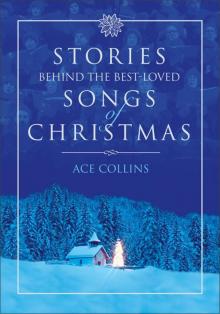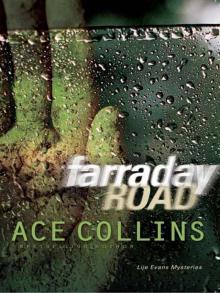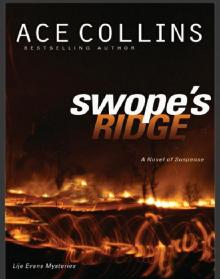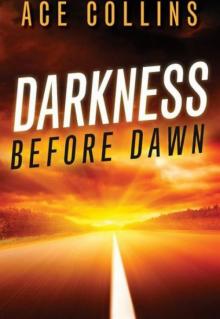- Home
- Ace Collins
Stories Behind the Best-Loved Songs of Christmas
Stories Behind the Best-Loved Songs of Christmas Read online
Also by Ace Collins
Stories Behind the Great Traditions of Christmas
Stories Behind America’s Hymns of Faith: Songs That Unite Our Nation
Turn Your Radio On: The Stories Behind Gospel Music’s All-Time Greatest Songs
Stories Behind the Best-Loved Songs of Christmas
Ace Collins
ILLUSTRATIONS BY CLINT HANSEN
ZONDERVAN™
Stories Behind the Best-Loved Songs of Christmas
Copyright © 2001 by Andrew Collins
All rights reserved under International and Pan-American Copyright Conventions. By payment of the required fees, you have been granted the non-exclusive, non-transferable right to access and read the text of this e-book on-screen. No part of this text may be reproduced, transmitted, downloaded, decompiled, reverse engineered, or stored in or introduced into any information storage and retrieval system, in any form or by any means, whether electronic or mechanical, now known or hereinafter invented, without the express written permission of Zondervan.
EPub Edition © MARCH 2010 ISBN: 978-0-310-87387-7
Requests for information should be addressed to:
Zondervan, Grand Rapids, Michigan 49530
* * *
Library of Congress Cataloging-in-Publication Data
Collins, Ace.
Stories behind the best-loved songs of Christmas / Ace Collins.
p. cm.
Contents: Angels, from the realms of glory—Angels we have heard on high—Away in a manger—The Christmas song—Do you hear what I hear?—The first noel—Go tell it on the mountain—God rest ye merry gentlemen—Good Christian men, rejoice—Good King Wenceslas—Hark! the herald angels sing—Have yourself a merry little Christmas—I heard the bells on Christmas day—I wonder as I wander—I’ll be home for Christmas—It came upon the midnight clear—Jingle Bells—Joy to the world—Mary, did you know?—O come, all ye faithful—O come, o come, Emmanuel—O holy night—O little town of Bethlehem—Rudolf the red-nosed reindeer—Silent night—Silver bells—There’s a song in the air—Twelve days of Christmas—We three kings—What child is this?—White Christmas.
1. Carols, English—History and criticism. 2. Popular music—History and criticism. 3. Christmas music—History and criticism. I. Title.
ML1400.C62 2001
264'.23—dc21
2001026973
* * *
Lyrics for “Mary, Did You Know?” by Buddy Greene and Mark Lowry © 1993 Word Music, Inc., and Rufus Music. All rights reserved. International rights secured. Used with permission.
For Terry, who, in a small rural church on a snowy night, brought “O Holy Night” to life. Thanks for all you have given me over the years. Love, Ace
Table of Contents
Also by Ace Collins
Title Page
Copyright
Dedication
FOREWORD
1 ANGELS, FROM THE REALMS OF GLORY
2 ANGELS WE HAVE HEARD ON HIGH
3 AWAY IN A MANGER
4 THE CHRISTMAS SONG
5 DO YOU HEAR WHAT I HEAR?
6 THE FIRST NOEL
7 GO TELL IT ON THE MOUNTAIN
8 GOD REST YE MERRY GENTLEMEN
9 GOOD CHRISTIAN MEN, REJOICE
10 GOOD KING WENCESLAS
11 HARK! THE HERALD ANGELS SING
12 HAVE YOURSELF A MERRY LITTLE CHRISTMAS
13 I HEARD THE BELLS ON CHRISTMAS DAY
14 I WONDER AS I WANDER
15 I’LL BE HOME FOR CHRISTMAS
16 IT CAME UPON THE MIDNIGHT CLEAR
17 JINGLE BELLS
18 JOY TO THE WORLD!
19 MARY, DID YOU KNOW?
20 O COME, ALL YE FAITHFUL
21 O COME, O COME, EMMANUEL
22 O HOLY NIGHT
23 O LITTLE TOWN OF BETHLEHEM
24 RUDOLPH THE RED-NOSED REINDEER
25 SILENT NIGHT
26 SILVER BELLS
27 THERE’S A SONG IN THE AIR
28 THE TWELVE DAYS OF CHRISTMAS
29 WE THREE KINGS OF ORIENT ARE
30 WHAT CHILD IS THIS?
31 WHITE CHRISTMAS
About the Publisher
Share Your Thoughts
FOREWORD
There is a treasure of inspiration to be found in these pages. If you love Christmas, then this book is going to bless you time and time again. You will laugh and cry, and history will come to life. You will learn and understand things you didn’t know before, giving you a much richer grasp of the music that makes this season so very special. You will probably also want to rush out and tell someone you know one of these stories.
Those who know me well know that Christmas is my favorite time of the year. I love shopping, wrapping gifts, decorating, and even the hustle and bustle that goes with the season. But above all the other traditions, I love the music of Christmas.
For me, music brings Christmas to life. Songs about the birth of Jesus transport me to the first Christmas. A carol that describes snow makes me feel the chill. When I hear the story of a shunned reindeer, I feel sorry for him. I guess because these songs offer wonderful memories along with beautiful music, I treasure the times I get to sing them at home, in church, and on the stage. To me, each one of these special songs is a pretty package that I get to unwrap again every year; and now, thanks to this book, each one of these musical packages contains a newly discovered surprise that makes it even more meaningful. These new surprises are the product of one man’s quest.
Ace Collins is not only one of my closest friends, he is my favorite writer and the best storyteller I have ever known. In this book, he has touched me like never before. To know the background on these inspirational Christmas songs has changed my perspective on Christmas itself. I will never again sing any of these carols without being transported back to the place and time it was written.
Stories Behind the Best-Loved Songs of Christmas is a book that will bring the Christmas season into sharper focus for you. You will find out why I now wish my friends a “mighty” Christmas, how a tiny bell made a movie unforgettable, and why one of the most spiritual songs I have ever sung was once banned by the church. Yet more than simple information and holiday trivia, these stories will enlighten and inspire you in ways I can’t begin to explain. I can only say that after reading this book, I believe that Christmas—its roots and traditions and music—will mean so much more to you.
Thank you, Ace, for answering the call and bringing these stories to the world. Your gift of this book helps all of us to remember the true reason for the season and the inspiration behind the music that brings Christmas to life each year. There is no doubt that reading and rereading Stories Behind the Best-Loved Songs of Christmas will be a central part of my Christmas for years to come. I can hardly wait to share this book with everyone I know and love.
—Louise Mandrell
1
ANGELS, FROM THE REALMS OF GLORY
Angels, from the Realms of Glory”—possibly the best-written, sacred Christmas carol of all time—helped launch a revolution that continues to impact millions of lives today. At its heart is its writer, an Irishman born in November of 1771.
James Montgomery was born in Irvine, Ayrshire, Scotland. Montgomery’s father, John, was an Irish Moravian missionary. When his parents were called to evangelistic work in the West Indies, the child was sent to a Moravian community in Ballymena, County Antrim, Ireland. By the time he was seven, James was at Fulneck Seminary, Yorkshire, England. Five years later, the parents ]ames hardly knew died on the mission field.
Perhaps because of the distance from and th
e tragic loss of his parents, Montgomery never was very interested in his schooling. Flunking out of seminary, he became a baker’s assistant for a short time. By the age of twenty, the young man was little more than a vagrant, moving from job to job, often unemployed, and homeless for weeks at a time.
Montgomery’s only interest was writing. He spent what little money he had on pencils and paper, taking hours to compose poetic odes on everything from loneliness to faith. Though no publisher was interested in his work, the radical editor of the Sheffield Register saw something in the young man’s raw talent. For the next two years Montgomery got paid to do what he most loved to do—write stories. He also learned firsthand about the hardships of being an Irishman under English rule. At the age of twenty-three, when the newspaper’s owner was run out of town for writing radical editorials concerning Irish freedom, the missionary’s son took over the Register.
In an attempt to quell the British government’s wrath, Montgomery changed the paper’s name to the Sheffield Iris. Yet he didn’t change its editorial stance. Just as his parents had strongly rebelled against the strict rules and rituals of England’s official church, James was bent on carrying on a written war for Ireland’s freedom. At about that time, he also became an active leader in the abolitionist movement. His fiery editorial stance twice landed him in prison. Yet each time he was released, he returned to the Iris and continued his printed war for freedom on all fronts.
When Montgomery was not waging an editorial crusade against English rule and slavery, he was reading his Bible in an attempt to understand the power that motivated his parents’ lives and ultimately led to their deaths. In time, his Scripture study and rebellious zeal would blend and send the young man on a new mission. One of the first hints of this change was revealed on Christmas Eve 1816.
Irishmen, who hated all things British, probably carefully studied the newspaper each day, hoping to find some Montgomery-penned passage that would inspire more to join their revolution. It is certain that local government officials who read the Iris often wished to nail the man who was so often a thorn in their side. Yet on December 24, 1816, readers discovered a different stance from the fiery editor. On that day, his editorial did not divide Irish from English, but rather brought everyone who read the Iris closer together.
Angels, from the realms of glory,
Wing your flight o’er all the earth;
Ye who sang creation’s story,
Now proclaim Messiah’s birth.
Chorus:
Come and worship, come and worship,
Worship Christ the newborn King.
Shepherds in the fields abiding,
Watching o’er your flocks by night,
God with man is now residing,
Yonder shines the infant Light.
Chorus
Sages, leave your contemplations,
Brighter visions beam afar;
Seek the great Desire of nations,
Ye have seen His natal star.
Chorus
Saints before the altar bending,
Watching long in hope and fear,
Suddenly the Lord, descending,
In His temple shall appear.
Chorus
Written in the same poetic verse that Montgomery had employed during the aimless wanderings of his youth, “Nativity”—what would eventually become the carol “Angels, from the Realms of Glory”—told the story of angels proclaiming the birth of a Savior for all people, English and Irish, rich and poor, Anglican and Moravian. Eloquent, beautiful, and scripturally sound, Montgomery soon touched more lives for Christ with the stroke of his pen than his parents did in all their years of missionary work.
Still, when read between the lines, there was a bit of social commentary in “Nativity.” A verse long-deleted from the carol speaks of a society that needs to right some wrongs. That lost stanza also reveals the writer’s personal journey in finding purpose and meaning in his own life:
Sinners, wrung with true repentance,
Doomed for guilt to endless pains,
Justice now revokes the sentence;
Mercy calls you. Break your chain.
As Montgomery would soon find out, his poem would break chains, but not those he had envisioned. The impact of “Nativity” would actually foreshadow the writer’s future, since he would come to revolutionize music and thinking in the English church.
As often is the case with inspired work, irony stepped in and took an important role in revealing “Nativity” to a mass audience. The Irish revolutionary’s poem might have been forgotten if not for an Englishman. It was a member of the English establishment, the same group against which Montgomery had long fought, that would become the agent in making his poem a worldwide favorite.
Henry Smart, the son of a music publisher, had given up a successful law career to become one of England’s finest organists and composers. Like Montgomery, he was a revolutionary, only his cause was bringing new and beautiful music to English congregations, something that often involved bitter conflicts. Many traditionalists wanted nothing in church services but the simple chants that had been a part of worship for hundreds of years. They often argued that the members of the congregation were merely spectators and should not be involved in the important facets of worship. Smart, however, felt that God spoke to every man and woman and that worship should be a joyful, corporate experience.
In the face of ridicule, Smart published new songbooks with harmonized melodies. When people heard his harmonies, they demanded that his work be used by the church. Bowing to the will of the people—and realizing that other Protestant denominations had already begun using this “new” musical style—the Church of England allowed the composer’s ideas to take root. It is no exaggeration to say that Smart is to harmonized church music what Bach is to the German chorale.
Yet the fact that Smart saw the need for new excitement in worship was ironic. By the age of eighteen, Smart was going blind. He probably couldn’t have even read the poem that James Montgomery had written on Christmas Eve, 1816. But somewhere, some twenty years after it had been written, the composer listened to the Irishman’s words. Inspired by the wisdom, power, fire, and beauty he saw in “Nativity,” Smart composed a tune to go with the poem. When published, the Montgomery/Smart collaboration had a different title and a new, vibrant life. “Angels, from the Realms of Glory” would not only be welcomed as a new Christmas carol, it would soon become one of the songs that opened the door for a new, joyful, and uplifting musical style in hundreds of English churches.
But even before Smart had married his music to Montgomery’s poem, Montgomery had lost interest in the Irish revolution. As he grew to fully understand his parents’ calling, he returned to the Moravian church and became an avid worker for missions. He also began to write hymns, ultimately composing more than four hundred. With the aid of Henry Smart, he led a quieter rebellion, bringing a festive, personal style of music into church services that made the congregation an active part of worship.
A music critic once wrote, “For comprehensiveness, appropriateness of expression, force and elevation of sentiment, ‘Angels, from the Realms of Glory’ may challenge comparison with any hymn that was ever written, in any language or country.” Therefore, it seems appropriate that the strong faith that was evident in every word, line, and verse not only sustained the song’s remarkable writer on his often difficult and solitary journey through life, but also helped open the church door for a more joyful worship experience.
Always looking at his own life and experiences for inspiration, Montgomery once wrote in an inspirational poem that he meant to set to music:
Beyond this vale of tears,
There is a life above,
Unmeasured by the flight of years;
And all that life is love.
Montgomery continued to write hymns until the day he died in 1854. By that time, the man twice imprisoned by England for his beliefs had heard his “Angels, from the Realms of Glory”
sung in the Anglican churches of London. And the revolution begun in an Irishman’s newspaper eventually touched people both throughout England and far beyond her borders.
2
ANGELS WE HAVE HEARD ON HIGH
Many images accompany Christmas—fun and frolic, snow and decorations, laughter and family gatherings—images so ingrained in most people’s minds that they find it difficult to imagine the holiday any other way. Yet, in truth, Christmas only recently became the festive holiday we now cherish. For almost fifteen hundred years, the observation of the birth of Jesus was not recognized on every street corner but left to divinely called men who led a hard and demanding life, toiling in poverty and serving people who understood little about the most elementary facets of Scripture and the life of the soul. Yet these men stayed the course and left their fingerprints on every church of every denomination in the world today.
Monks were and still are solitary men, dedicating every ounce of their being to the Lord and giving up their own families to serve the family of God. Their voices were often the only ones who told of the birth of Christ and their lives the only example of Christian faith. Even to those who knew them, monks were mysterious figures. Their world was one of sacrifice, their sense of duty second only to their humble spirit. Yet from this spirit and life came one of the most beautiful and soaring carols of Christmas.
Much like the lives of most monks, “Angels We Have Heard on High” is a song steeped in great mystery. Unlike other carols whose writers are unknown but whose origins can be clearly traced to a certain time or certain place, this song seemingly appeared out of the air. Because the first to sing “Angels We Have Heard on High” lived in nineteenth century France, many believe that it must have originated there. In fact, most sources today call it a French carol. Yet even that assumption is often called into question by songologists. What can be stated with absolute certainty is that this Christmas song must have been penned by a person who had a professional knowledge of the Bible and an incredible gift for taking Scripture and reshaping it into verse. This fact, combined with the use of Latin in the song’s chorus—making it a macaronic carol—seems to indicate that a monk or priest from the Catholic church was more than likely responsible for writing “Angels We Have Heard on High.”

 Stories Behind the Best-Loved Songs of Christmas
Stories Behind the Best-Loved Songs of Christmas Farraday Road
Farraday Road Yellow Packard
Yellow Packard Swope's Ridge
Swope's Ridge Darkness Before Dawn
Darkness Before Dawn